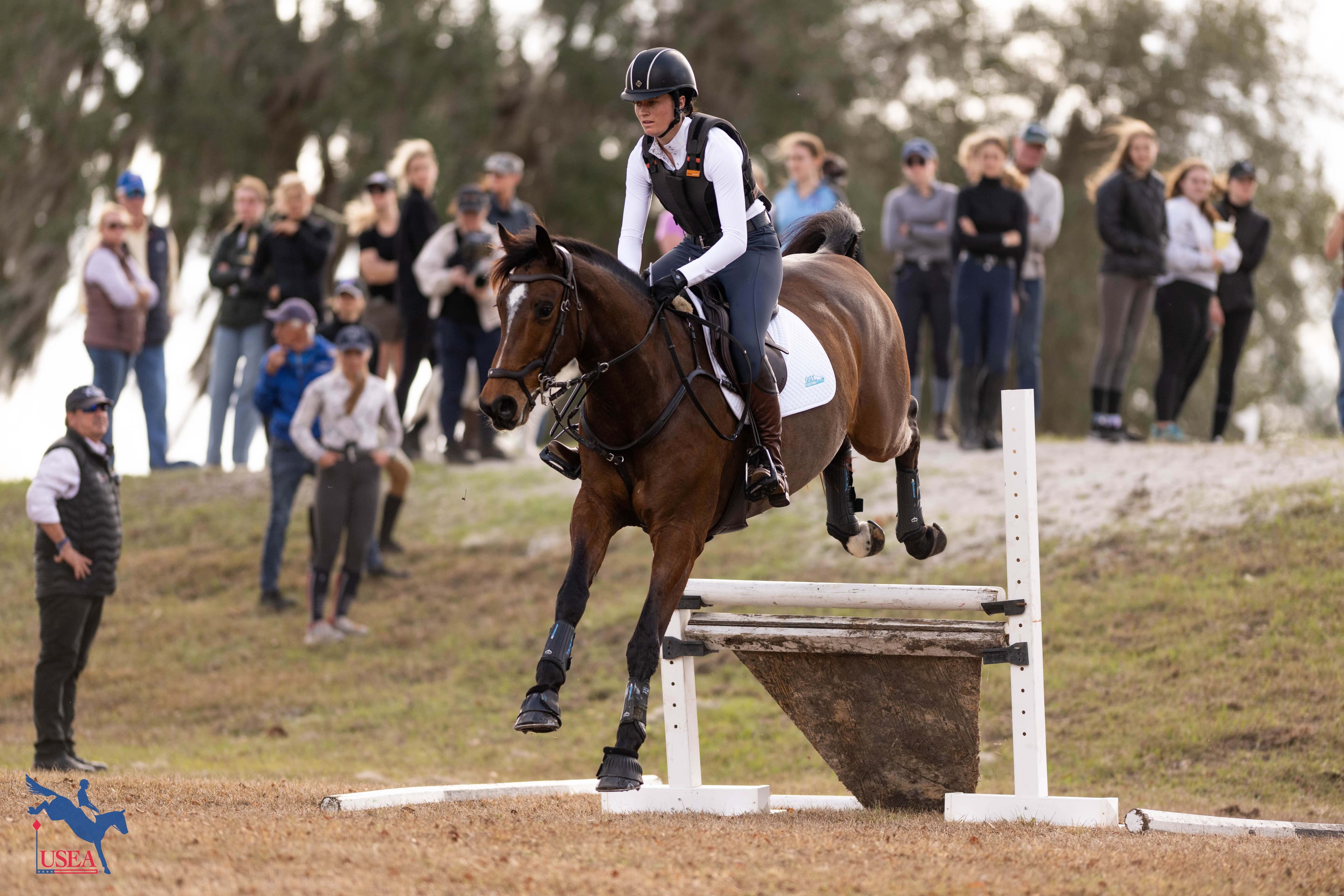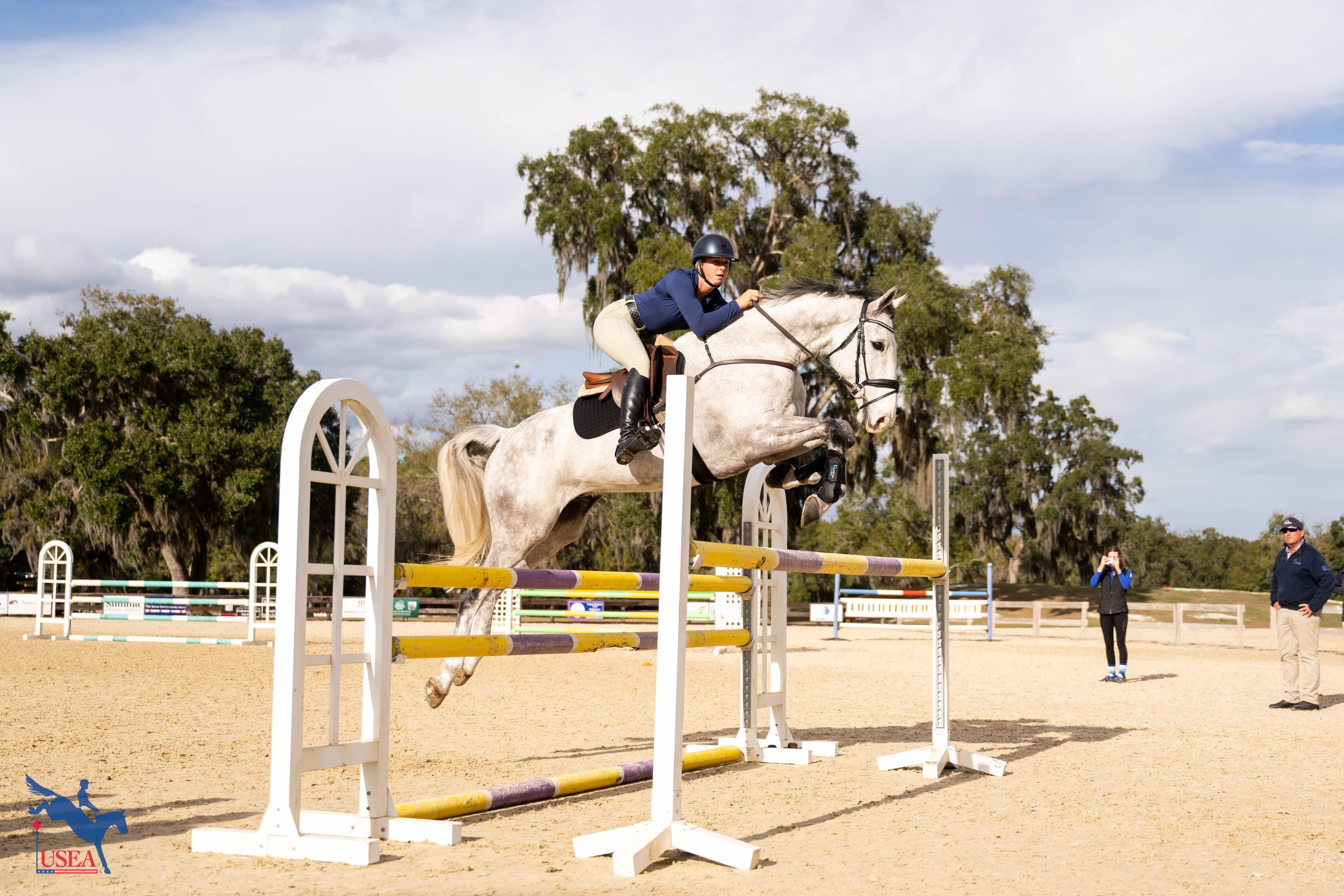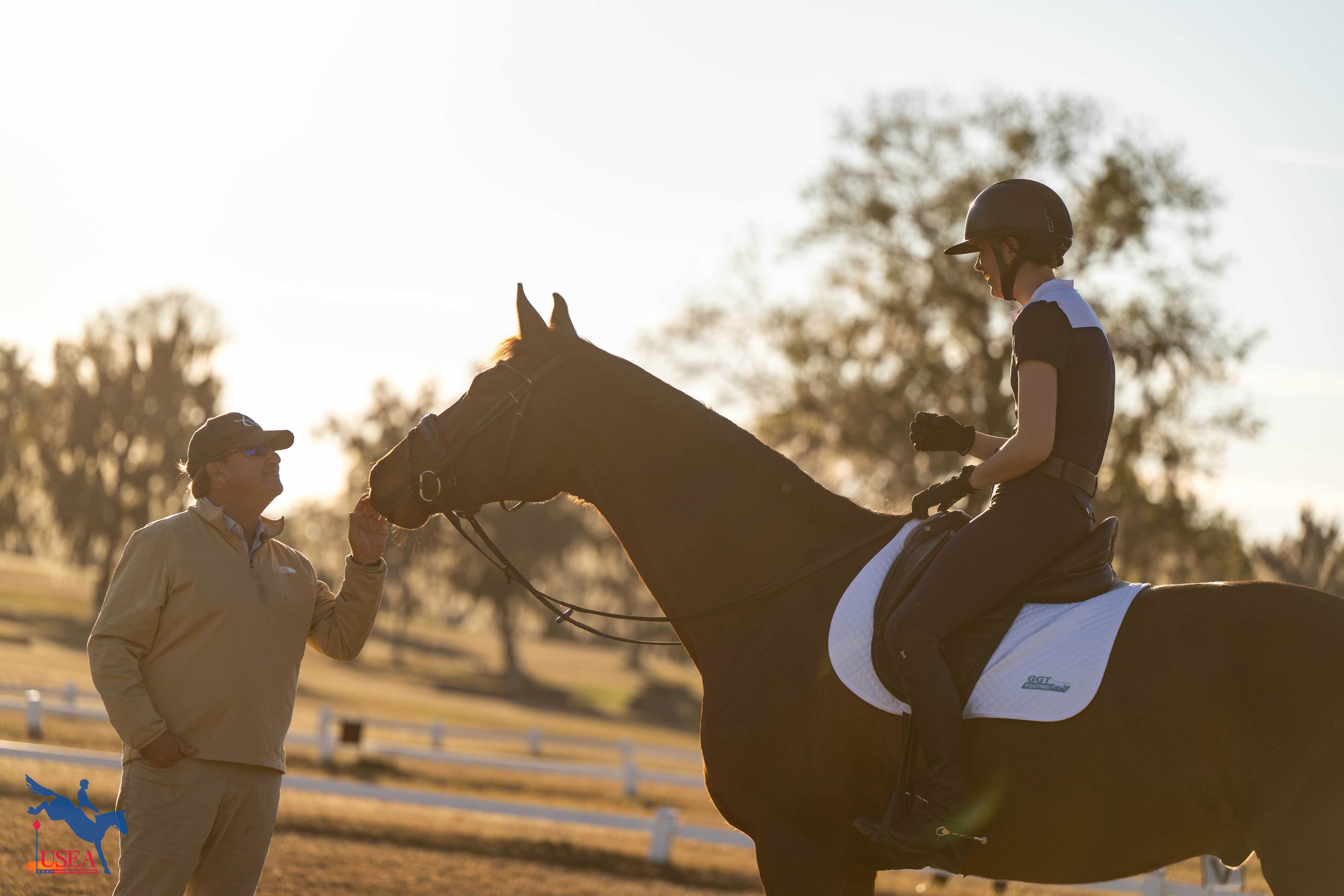USEA Collapsible Fence Study Year One Update
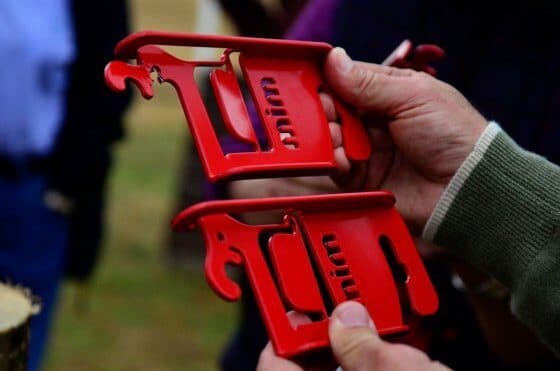
As year one of the USEA Collapsible Fence Study comes to an end, Dr. Suzanne Weaver Smith addressed the USEA Board of Governors at the 2016 USEA Annual Meeting and Convention on the progress of the University of Kentucky (UK) research at this halfway point.
Dr. Smith leads a small, but mighty team at the University of Kentucky which consists of Mechanical Engineering (ME) graduate student Gregorio Robles Vega, ME undergraduate senior Lange Ledbetter and Shannon Wood, an equestrian and engineering physics student at Murray State University.
This study builds on understanding gained during Dr. Smith’s work studying frangible devices in 2009-2011. The previous research of Dr. Smith and her team at UK resulted in new understanding of available devices and development of new concepts. Now thanks to the many donors, including Ms. Jacqueline Mars whose generous donation kicked off the fundraising efforts, who have pledged their support, Dr. Smith and her incredible team continue to pursue improved safety in eventing.
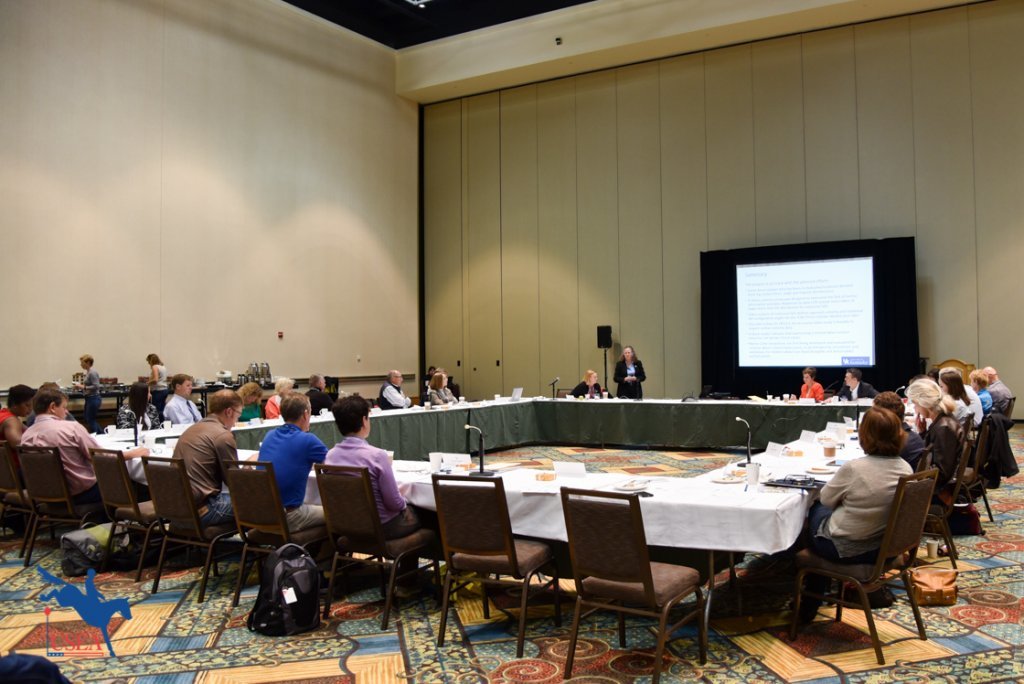
Dr. Smith addressing the USEA Board of Governors. USEA/Leslie Mintz Photo.
The overarching goal of this study is to fill in the missing pieces that make up the picture of a rotational fall. “What is happening at the point of contact between the horse and the fence is a big unknown,” Dr. Smith commented. “That’s what really has to be understood better in order to have recommendations and requirements enabling new designs of frangible fences.”
In order to properly study the what, why and how of rotational falls, Dr. Smith and her team dedicated year one to collecting and analyzing the data that is currently available. This includes examining all the factors that can influence a rotational fall. This led the team into their first hurdle, a lack of data on the subject because of the rarity of rotational falls. Dr. Smith explained that in 2015, 1 in 536 starters at an FEI event had a rotational fall. “That translates to 1 in 16,080 jump approaches if I assume 30 jumps per start. There really is very little information that is available. The challenge for us is that we have to work very hard to find the information that is available and relevant for us to use,” she said.
Their first step at putting together the pieces of a rotational fall included a better understanding the size and shape (mass and inertia) of horse and rider, and how each of those affect the outcome of a fall. “How forward motion turns into rotational motion is because of the size and shape of what is overturning. We can’t control that, but we need to know it better, so we looked in the literature,” Dr. Smith explained. She continued that there are only four existing papers that reference relevant equine mass, and of those only seven horses were examined. This doesn’t give enough insight on horse mass and inertia – and none on rider mass and inertia - so the team spearheaded a citizen survey to get more of this information from owners and riders of event horses.
The team will use these measurements of horses for computer modeling and simulation in year two of this study. Their current model considers the horse inertia as three segments: head, neck and trunk (which includes everything else). These are combined with rider mass and size in their simulation. “We will pull the data together to get a more complete understanding of the statistical distributions of horse and rider size and shape for use in the computer models,” Dr. Smith stated. “The trunk segment is the most important influence in this rotational fall, but the neck, head and rider aren’t insignificant.” So far the team has received 74 responses, but are still welcoming more surveys, especially from Advanced level horses. Click here to access that survey.
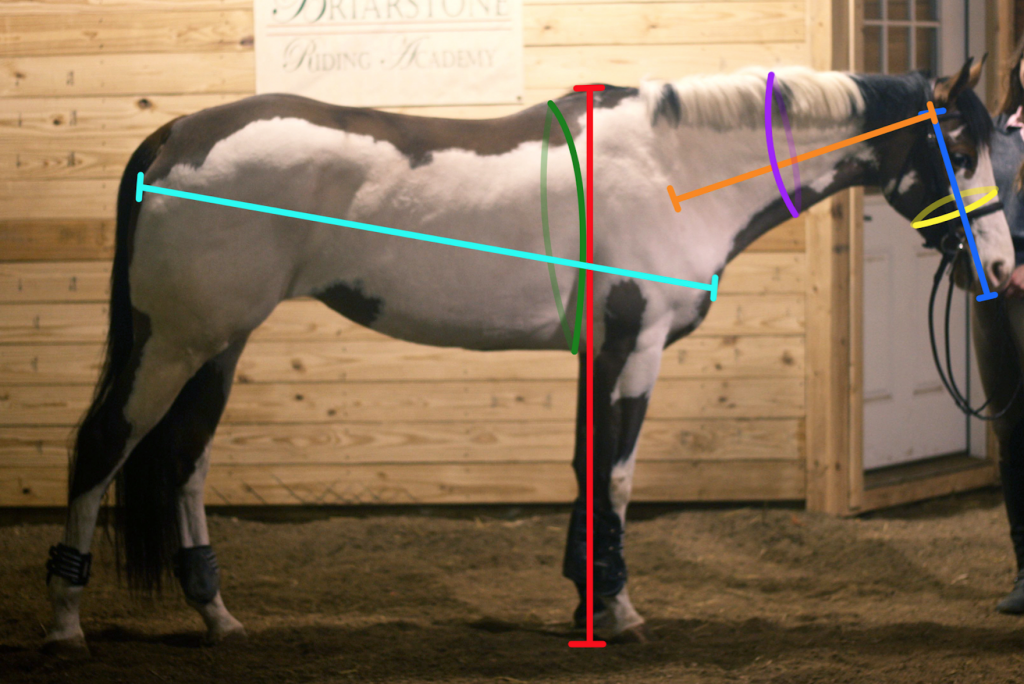
Measurements for the citizen survey.
The second key variable the team considered is contact forces. Currently there is no data available measuring contact force during a rotational fall, but analysis of data from a British Eventing (BE) fence study in 2008 and 2009 gave Dr. Smith and her team great foundation information for their current study. The BE data measured non-rotational-fall contact with cross-country fences.
The results highlighted the precarious job of frangible devices. “For 38 percent of the jump approaches, the horses made contact with the fence,” Dr. Smith reported. “Any of these [safety] devices have to work in that environment, where they are going to get hit over and over again, and then they still have to work the way they are supposed to when it’s needed.”
The angle of impact was measured each time a horse made contact with a fence. The majority of the front leg contact angles were overall centered around 45 degrees above horizontal as one might expect. However, when we separated the data further as was done for the first time this year, we see different data patterns in different situations. For example, the contact angles are larger for the back rail of an oxer fence. The results also show negative angles are recorded when the impact was measured as the horse is coming up in the front. While both are situations with angles that can initiate a rotational fall, different devices are likely to be more effective in one or the other.
Dr. Smith noted that the data from this study is consistent with the common theories that have led to the development of current safety device and rules in eventing, and it gives the team information to get a better picture of the physics of a rotational fall.
This year the team also analyzed a few existing videos of rotational falls that had the right perspective for analysis. This allowed them to record the duration and rate of the angular rotation. They will also measure the relative angles for each segment of the horse and rider: trunk, neck, head and rider. These video analyses will also be used to validate simulations created in year two of the study.
As they go forward with the simulations, the team will utilize a Monte Carlo approach, which is a type of simulation which explores a wide range of scenarios without necessarily having all the information for each individual simulation. This will give Dr. Smith and her team information on hundreds of different incidents and outcomes of fence contacts. This type simulation method was used by NASA before the first moon landing to explore the widest range of risks associated with overturning of a lunar landing. In the simulation for this study, a representative population, based from the completed citizen surveys, along with video analysis results and contact force data, will provide inputs for these simulations. The team is slated to begin these simulations in 2017.
Overall, Dr. Smith noted the study is on track with planned efforts with the goal of understanding, “how fast, how far and in what directions frangible and deformable fences need to react in order to help mitigate the rare bad situations that initiate rotational falls.” Analysis and conclusions from the study are not expected to be available until after Dr. Smith and her team conclude the study next year. She and the team appreciate all of the past and future contributions to the study: financial, video, advisory and survey inputs.
The team is still encouraging submissions of the citizen survey, especially from Advanced level horses. You can complete the survey by clicking here.
This study would not be possible without the immense fundraising efforts of the USEA Foundation. If you wish to promote safety in eventing by supporting the USEA Collapsible Fence Study, click here to donate online.

